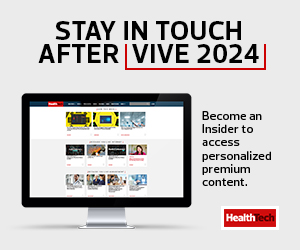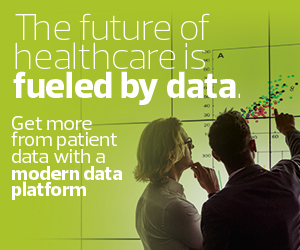Artisight President Dr. Stephanie Lahr; Jessica Beegle, health technology expert and former Lifepoint CIO; HCA Healthcare CIO Marty Paslick; and Dr. Anthony Chang, Chief Intelligence and Innovation Officer at CHOC Children’s Hospital discuss healthcare organizations’ AI readiness at ViVE 2024 in Los Angeles.
Chang suggested gaining buy-in from the C-suite or hospital leadership by showing them that AI can take on the organization’s two toughest and solvable problems. Leadership will need to be supportive in terms of giving the team a chance to succeed. They will also need to have lower expectations accompanied by a longer-term vision, he said.
Beegle pointed out that if an organization’s data isn’t organized and accessible, then it isn’t worth having that data. She emphasized the importance of doing an assessment to understand the health system’s core infrastructure and preparing it so that the organization can be ready and agile as new language models come out.
“Building a strong foundation now will really enable you to succeed in that area,” she said.
When it comes to buying or building AI solutions, Chang recommended doing both.
“There’s a special synergy when you have an in-house team, however small, and off-the-shelf solutions,” he said, explaining that those off-the-shelf solutions often don’t have aggressive maintenance schedules, and an in-house team is needed to ensure the solution is maintained properly.
According to Chang, health systems can’t afford to not have other resources when considering AI adoption because many organizations don’t have a data scientist in-house. He said the first step is for the C-suite to decide how they want to move forward as they think about investing in the future.
Finding out where to invest resources is key. Chang suggested that creating one or two data- or AI-related positions could make a big difference. Later, once AI tools are implemented effectively to support administrative tasks, leadership can choose not to replace people who decide to relocate or retire.
“There are ways to trim costs without creating panic,” he said.
DISCOVER: An expert explains how to pick the right AI solution in healthcare.
Quality AI Relies on Quality Healthcare Data
As organizations move toward AI adoption, they need to ensure their data is clean and of high quality. During a session titled “Garbage In, Garbage Out,” healthcare leaders discussed the impact messy and incomplete data can have on AI initiatives.
Richard Clarke, senior vice president and chief analytics officer at Highmark Health, explained that the best way to improve the quality of data is to start using it for something that will benefit the organization, because then people will care more about it. One of the limiting factors in the adoption of generative AI has been the data to enable those use cases.
“If you can fully represent the problem you’re trying to solve in the data, then these tools can be amazing,” said Clarke. However, he added that it’s becoming apparent that without complete and high-quality data, these tools aren’t as effective.
From a federal government perspective, Elisabeth Myers, deputy director of policy at the Office of the National Coordinator for Health IT, explained that it’s important for healthcare organizations to understand how they can get data that’s useful from the beginning of their AI journey.
“We talk a lot about AI, and one of the things that goes along with that is understanding what AI should be good at and how to set it up to do that. There’s not a magic wand that’s going to make that data good. We need to think about the data that is necessary for AI to function and to get to the use case that you’re looking for,” said Myers. “You don’t want AI making inferences on inaccurate and incomplete data, especially when we start talking about health equity and disparities.”
Ultimately, Myers said, it’s not just about quality of data but also collected granular data that gives health systems more insight into their patient populations.

















